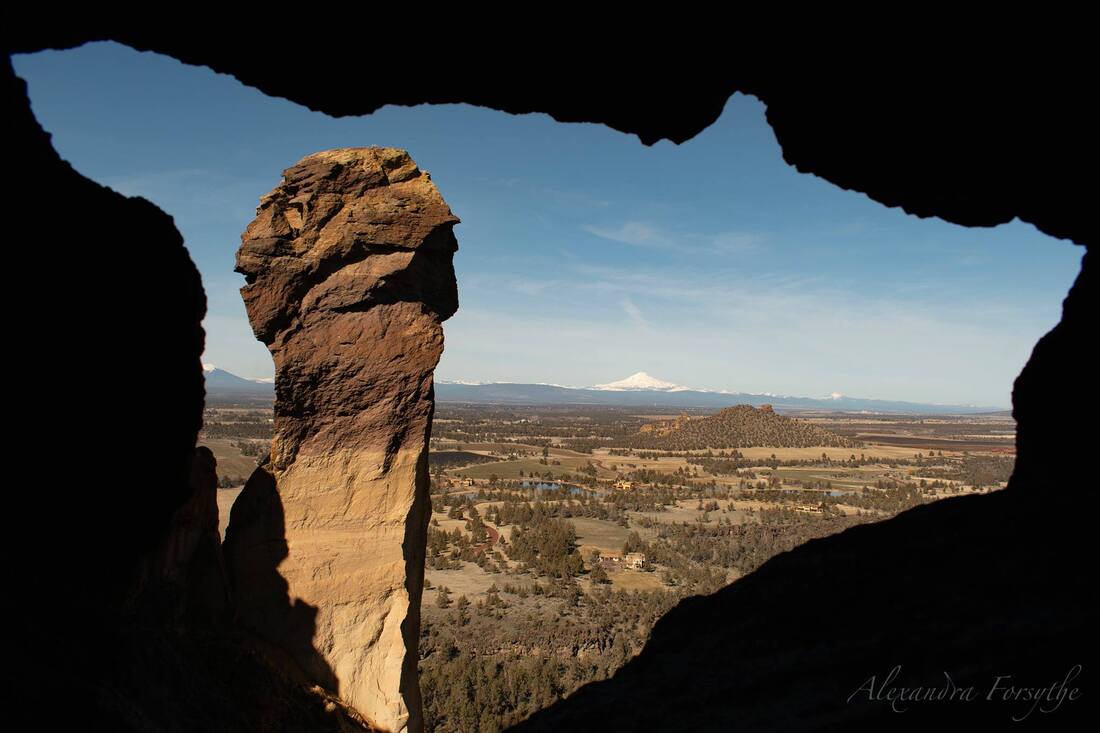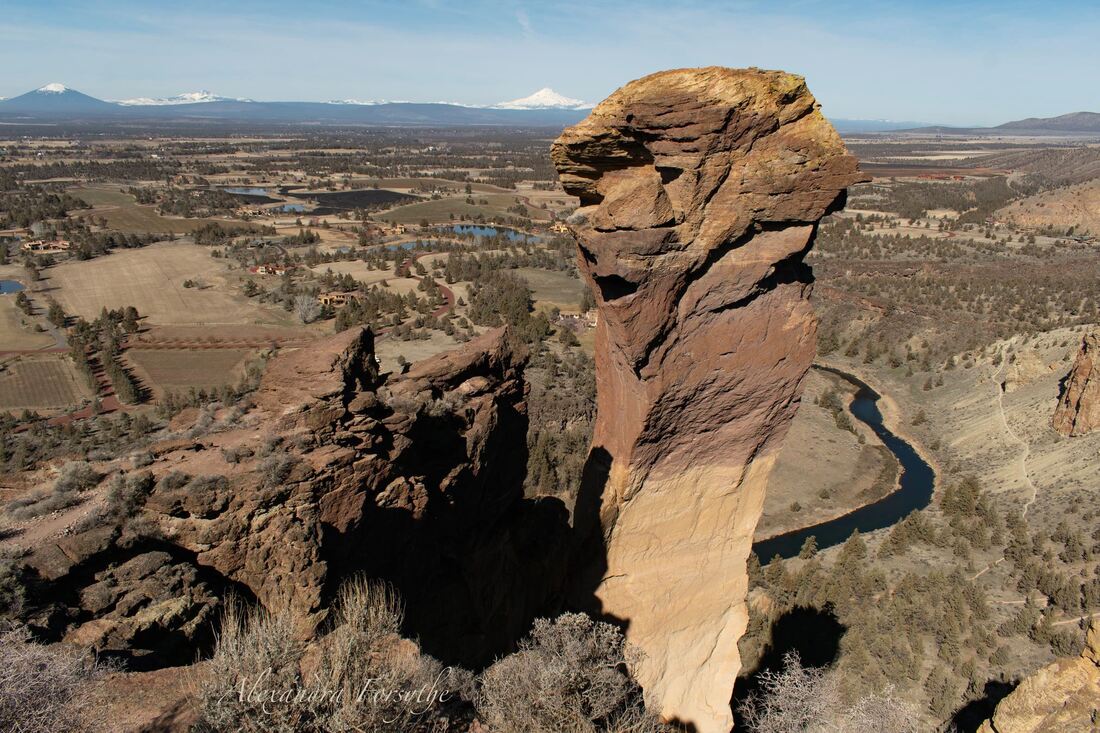Can you guess why this 350-ft spire is called "Monkey Face"? If you look closely, you'll see two eyes, a nose, and a mouth.
This rock formation is a result of volcanic activity and erosion, and it is a rock climber's dream and nightmare. The pillar bulges out on all sides creating challenging overhangs. The first known ascent was in 1960 by Vivian Staender and her two climbing partners: Jim Fraser and Dave Bohn. The trio also came up with the name "Misery Ridge" - a name that is applied today to one of the most popular trails in the area.
Smith Rock State Park sits on the corner of the Crooked River Caldera. About 30-million years ago, the largest volcanic eruption to have ever occurred entirely within Oregon's borders happened here. The rock over the lava chamber collapsed, creating a 230-square mile depression. The event created Smith Rock tuff, then nearby volcanoes covered the tuff with basalt lava. The path of the Crooked River was blocked by lava, so the river formed a new channel. Around the perimeter of the caldera, rhyolite bodies intruded along the ring fractures.
Monkey Face and many of the other rock formations in Smith Rock have been carved by wind and erosion out of welded tuff and rhyolite. If you look closely at Monkey Face, you'll see that the head is more reddish than the rest of the spire. The head is welded tuff. The rest of the spire is non-welded tuff. Welded tuff is hardened ash which occurs when the materials spewing from the volcano are so hot that they weld together on impact or compaction.
It's a very cool area to explore, and it's easy to see why this is one of Oregon's Seven Wonders!
This rock formation is a result of volcanic activity and erosion, and it is a rock climber's dream and nightmare. The pillar bulges out on all sides creating challenging overhangs. The first known ascent was in 1960 by Vivian Staender and her two climbing partners: Jim Fraser and Dave Bohn. The trio also came up with the name "Misery Ridge" - a name that is applied today to one of the most popular trails in the area.
Smith Rock State Park sits on the corner of the Crooked River Caldera. About 30-million years ago, the largest volcanic eruption to have ever occurred entirely within Oregon's borders happened here. The rock over the lava chamber collapsed, creating a 230-square mile depression. The event created Smith Rock tuff, then nearby volcanoes covered the tuff with basalt lava. The path of the Crooked River was blocked by lava, so the river formed a new channel. Around the perimeter of the caldera, rhyolite bodies intruded along the ring fractures.
Monkey Face and many of the other rock formations in Smith Rock have been carved by wind and erosion out of welded tuff and rhyolite. If you look closely at Monkey Face, you'll see that the head is more reddish than the rest of the spire. The head is welded tuff. The rest of the spire is non-welded tuff. Welded tuff is hardened ash which occurs when the materials spewing from the volcano are so hot that they weld together on impact or compaction.
It's a very cool area to explore, and it's easy to see why this is one of Oregon's Seven Wonders!


